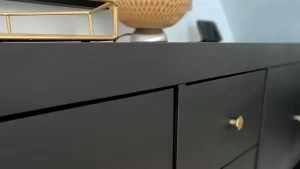Innovative Tech For Smart Homes – Enhancing Comfort and Convenience

Now innovative smart home tech allows us to make our lives simpler and better by using function-enabling devices and remote or hands-free devices.
Noise-cancelling windows can keep people’s sleep from being disrupted by the neighbour’s lawnmower, while a pre-programmed circadian lighting system can fade gently at bedtime and rise gradually in the morning to function as your wake-up call.
Smart Appliances
It might mean coming home to a bathroom floor that has automatically warmed to perfection, or an oven that has preheated itself and a coffee pot that has been set to brew.
In a smart home, appliances and utilities can automatically adjust to your needs – saving you time, energy and money. At night when electricity rates are reduced, your dishwasher can run with solar energy generation that helps your washer-dryer reduce its reliance on the grid.
Amazon Echo and Google Home, as well as other centralised hubs of these types, enable you to communicate with smart tech devices via voice commands, making the experience easier and faster as you aren’t required to memorise any specific device codes or instructions. Smart plugs and power strips can be used to monitor and control energy-wasting appliances, giving families the opportunity to cut hours of unnecessary energy-use. Renewable energy sources, if harnessed, can also help families decrease their ecological footprint. Smart technology can potentially play a role in optimising their utilisation too.
Smart Lighting
Smart home technology offers a range of features designed to make your home more comfortable and convenient. Smart lighting systems can be programmed to turn on and off at regular intervals on your schedule; they can even flash red if they detect carbon monoxide or they can turn on automatically when you arrive home.
Lighting systems can also be connected to notification systems such as smart door bells, and music streaming systems, so that they do different things when you ring the doorbell or come through the door (eg, the lights flash different colours when someone rings your doorbell, or music plays when you come through so people know you’re home).
Remote light control is a great way to encourage energy-saving – and many smart light bulbs and switches are compatible with Zigbee wireless communication technologies, which use ‘mesh’ low-power radio waves that will pass through walls and furniture without the need for a hub installation. A single smart home control hub also makes it quick and easy to create and manage lighting ‘Scenes’, which can have groups of devices perform multiple functions at once, for example to switch on multiple bulbs or dim all lights into a given state.
Smart Home Automation
Home automation or domotics refers to intelligent technologies that will automatically work according to your lifestyle at your home: for example, lights that can switch on or off depending on the time, or full-automation to interconnect home appliances such as refrigerators and garage doors to form an ecosystem on your home.
Smart home security solutions allow users to monitor their homes remotely. Motion sensors and video doorbell cameras Camera – both notify users via mobile application when there’s a danger happening right now in your house, thus helping users to feel safe and well-protected from any danger (peace of mind) at the same time (piece of mind).
Along with other aspects of home automation technology, greater energy efficiency (thanks to smart thermostats and lights) as well as the ability to keep track of kids, elderly relatives, pets, property and more (remote monitoring or even video surveillance) are among the rising criteria of prospective homebuyers.
Smart Home Security
The smart home emerges as an ecosystem of seamlessly connected devices whose overall operations are airtight. All components of this ecosystem are connected to the owner remotely, meaning that you can control and access smart devices whether in the living room or on a remote island.
For example, Google’s Nest smart thermostats and lighting systems can (indeed must) become attuned to the habits of their owners in order to minimise home energy consumption while still providing comfortable conditions. Or, smart lighting systems can operate on headless routines, turning lights on and off in select rooms at predictable hours.
Doorbell cameras and motion sensors that connect to smartphones and let owners monitor their homes remotely can be used to deter trespassers by tipping off someone trying to enter your home uninvited or to allow unexpected visitors to gain entry. They can also be used with smart door locks or garage door openers to allow or deny visitors access when needed; and they align with features of safety and security devices such as panic buttons to alert authorities during a break-in or medical emergency.



